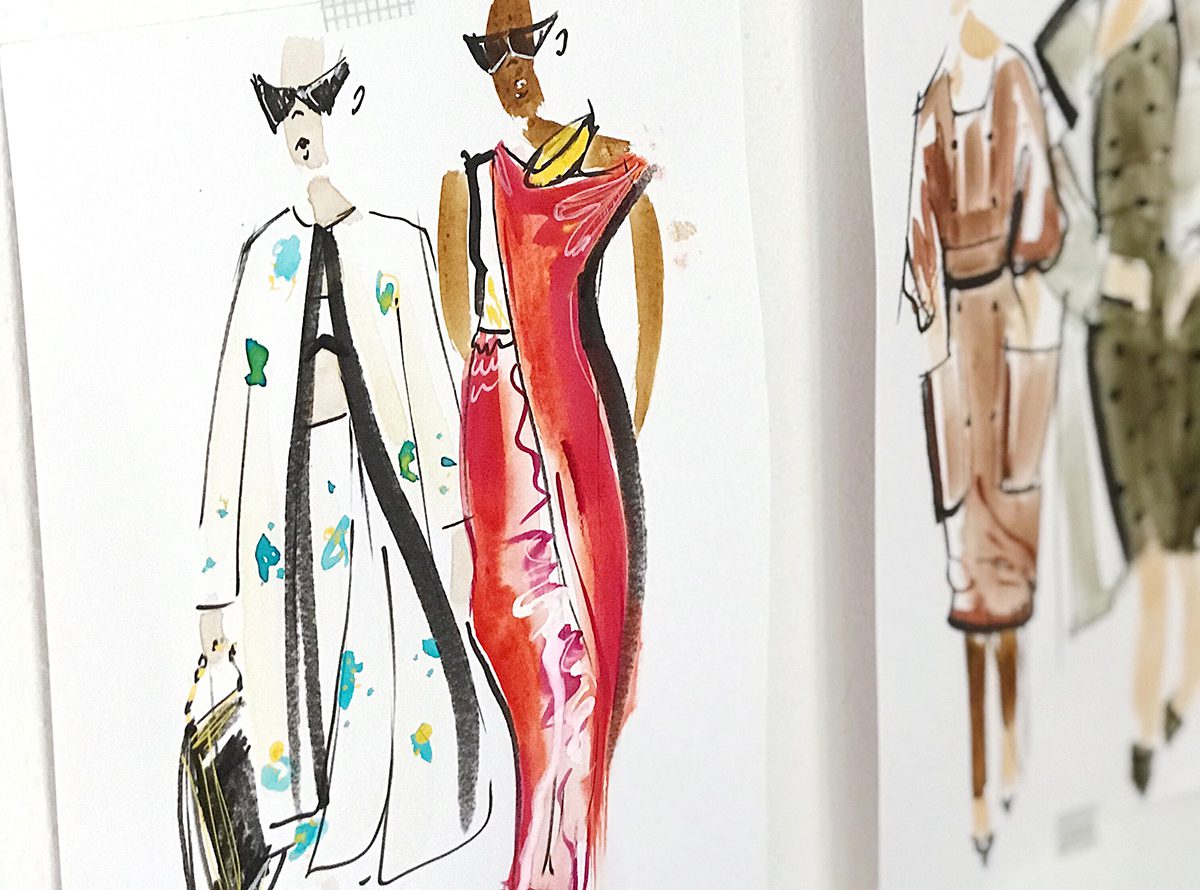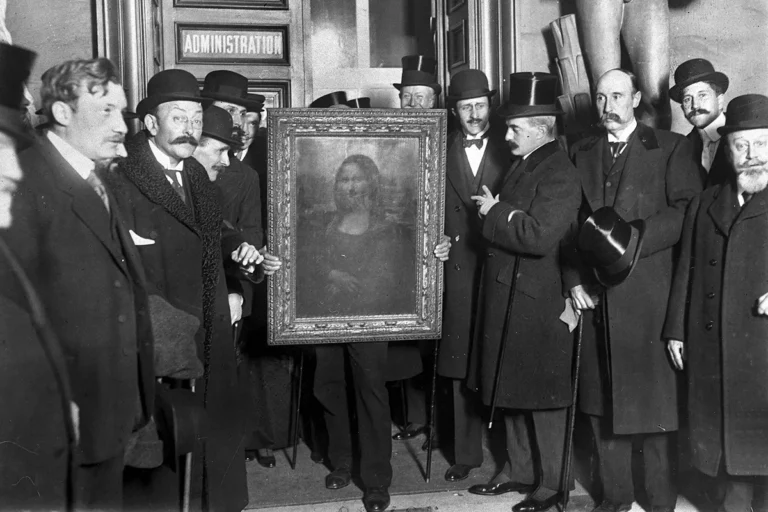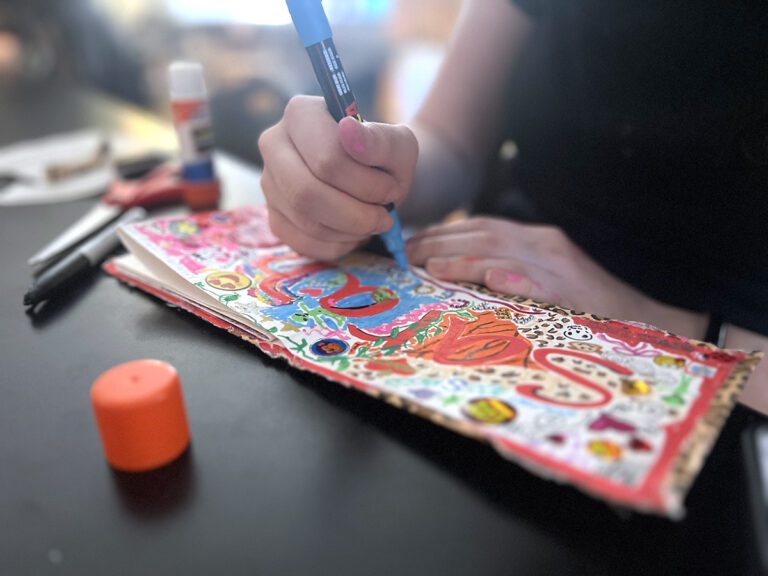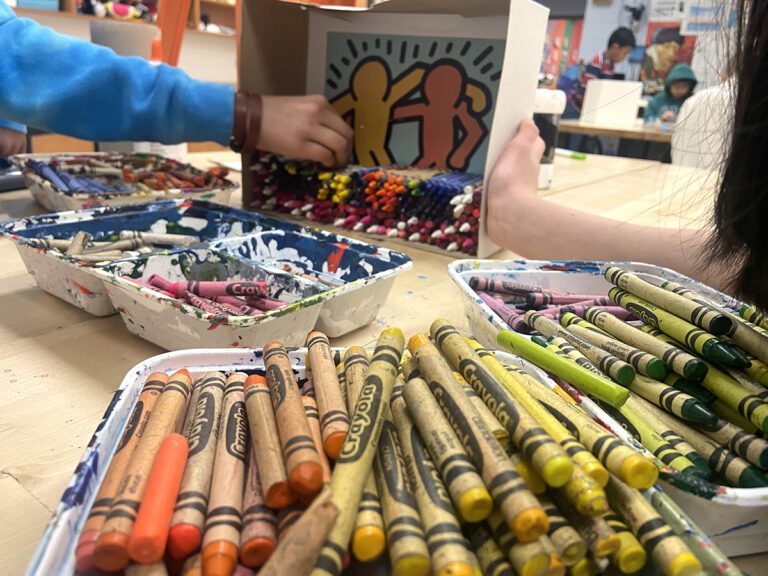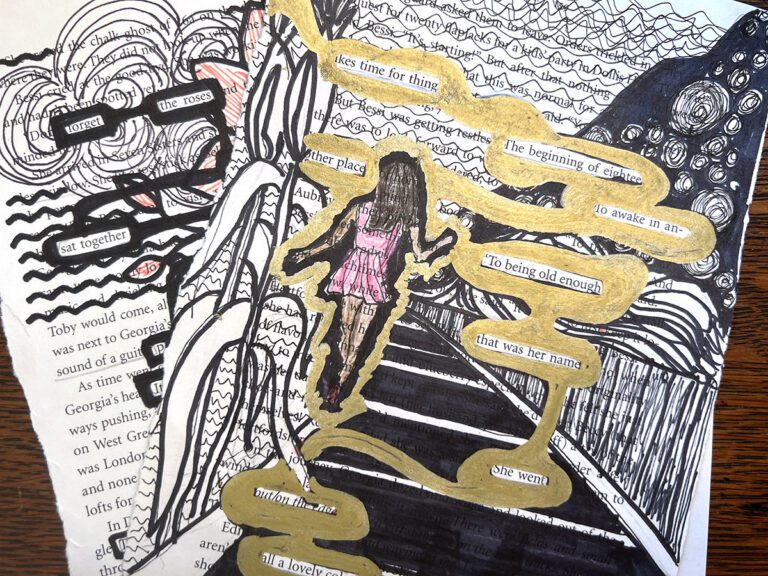Thumbing through our closets and curating our everyday attire can say a lot about who we are. As art educators, we may dress in a particular style to reflect the artwork we are currently teaching about. Or, we may just wear our favorite Vincent van Gogh-inspired t-shirt every casual Friday to inspire our students. Because fashion is so ingrained in life, artists highlight fashion trends and fads in their artwork. Have your students take a closer look at the fashion portrayed in artwork to determine what they can learn about art history.
If you are looking for fresh ways to keep your students interested in art history, try focusing on fashion with the steps below.
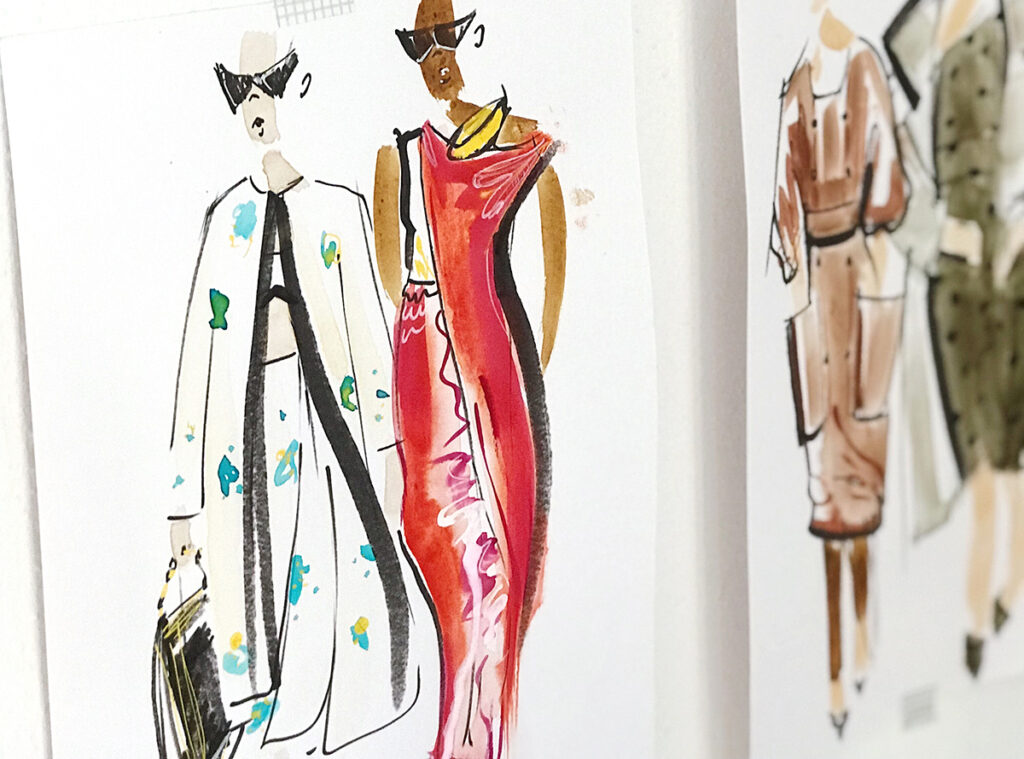
1. Select an artwork.
When looking at artwork through a fashion lens, start with artwork that has a lot of garments, accessories, and details. If you are not sure where to begin your search, check out the ones below.
Here are four examples of beginner artworks your class can ponder:
- Bust of Queen Nefertiti by Thutmose
- Mona Lisa by Leonardo da Vinci
- Cold Shoulder by Roy Lichtenstein
- American Gothic by Grant Wood
Here are four examples of intermediate artworks your class can inspect:
- Amphora With Herakles And Busiris
- The Arnolfini Portrait by Jan van Eyck
- Catch, The by Norman Rockwell
- Madame de Pompadour by François Boucher
2. Share the artwork.
Student observation is imperative, whether working individually, with a group, or with the whole class. Often, students will glance at an artwork for five seconds and blurt out that they’re done. We know they haven’t seen everything, but how do we get them to look longer?
Here are two ways to help students examine an artwork:
- Set a timer for 30 seconds. Students write down 20 fashion-related objects they see in the artwork.
- Set a timer for one minute. In pairs, students list as many nouns (people, places, and things) that they see. The pair with the longest list “wins.”
After observing key details, students can infer what these details mean. Here are a couple of activities to get students thinking more critically:
- After writing down what they observe, divide the paper into two more columns. Next to each fashion-related object, students ask a question about it and then answer it.
- After identifying fashion-related objects within the artwork, allow students to assess what the subject matter’s life or personality may have been like. Write a short biography about the main subject.

Let’s go through this process together as we decipher the Ancient Egyptian Bust of Queen Nefertiti by Thutmose. Here are some observations based on examination:
- Pose and Expression
She is looking straight at her viewers or admirers. Her lips are pressed together, and she seems to smile slightly. We can infer that she knows her power and is calm yet assertive. - Hairstyle
We cannot get a glimpse of her hairstyle, but she is wearing a large headdress. - Clothing
Since we only see the bust of Nefertiti, most of her clothing is left up to the imagination. We can see a collar full of vibrant colors like gold, terracotta red, and turquoise. The patterns repeat almost continuously until the base of the sculpture. We can infer that the remainder of her outfit was equally as ornate. - Accessories
Queen Nefertiti is wearing a tall headdress; it is half the length of the entire bust! There are more gold details such as a gold band above her eyebrows and a decorative mark in the center of the patterned band. We can infer it makes a statement for a reason. Upon further research, we discover it was worn in Ancient Egypt to communicate power or to recognize deities or rulers. - Makeup
Her makeup is alluringly bold yet simple, with black eyeliner along the contour of each eye. She has sculpted eyebrows and stained rose lips. Like the rest of our inferences, we can infer that she had the status and money to afford makeup. Upon further research, we learn that heavy eyeliner was to protect the eye from disease.
3. Connect to the Elements and Principles of Art.
For each item of clothing or accessory identified within the artwork, allow the students to group them into categories for the Elements and Principles of Art. This helps students to see the meaning behind the artist’s choices.
Use a handout like the Elements of Art Inventory from FLEX Curriculum below, or have students jot down their findings in their sketchbooks. Connect today to learn more about how to get the Elements of Art Inventory and others like it in FLEX Curriculum’s vast archive of resources.
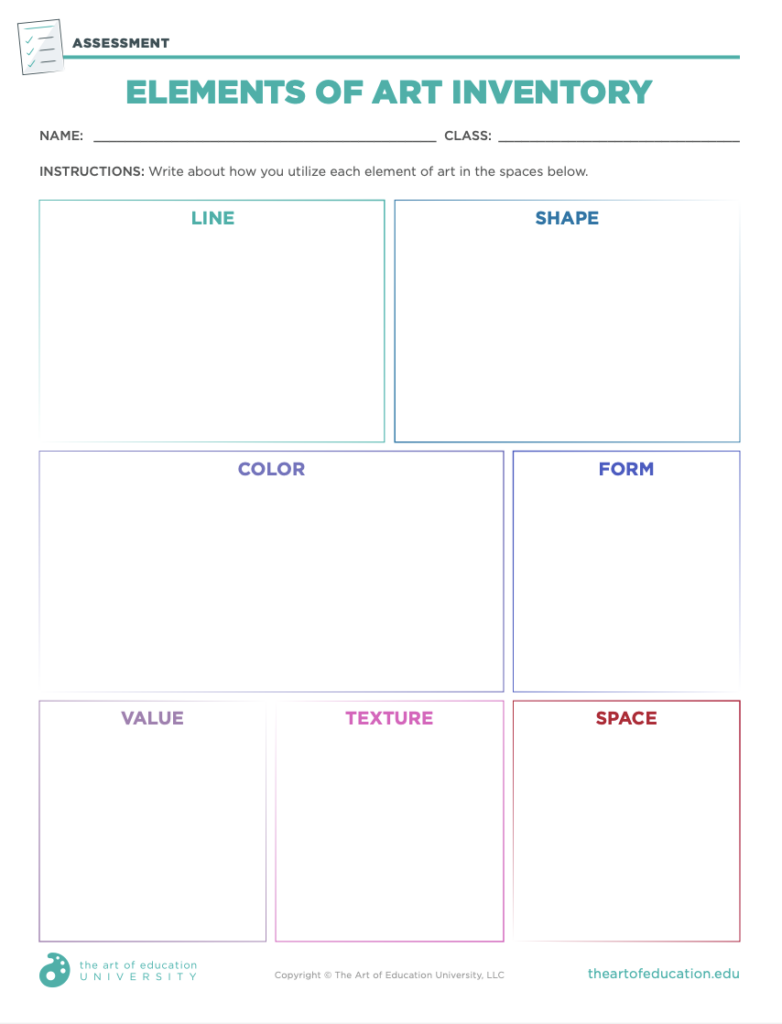
Here are three ways to help students group information into categories:
- Set a timer for one minute. Students list the three most important Elements of Art and the three most important Principals of Design they see, with examples for each.
- Draw each article of clothing or accessory they see in the artwork. Annotate their fashion sketch by labeling it with specific Elements and Principles.
- Assign teams of two to three students. Give each team one of the articles of clothing or an accessory from the artwork. Each team works together to list all of the Elements and Principles found in the item.
Here’s an example using the headdress from the Bust of Queen Nefertiti by Thutmose and the Elements of Art:
- Line
There is a thick gold band above the eyebrows. There are even horizontal and vertical lines in the middle band. Wavy and curved lines extend vertically on the emblem. The sides of the headdress create a diagonal line, making Nefertiti’s jawline appear narrower. - Shape
There are organic teardrop shapes in the gold emblem and squares and rectangles in the decorative band. The headdress is a triangular shape that flutes out at the top and tapers towards her head. - Color
The color scheme is a contrasting blue and gold. The band of rectangles also has contrasting green and reddish copper. - Form
The headdress itself is three-dimensional. However, we only see the specific viewpoint in this photo. It appears very flat and symmetrical. The emblem shows depth; it slightly pops off the front of the headdress and creates a subtle shadow. - Value
The headdress is a dark value. However, the gold accents reflect light. - Texture
This sculpture is old, and there is wear from the passing of time. The texture is soft and faded, with some areas of paint burnished off. - Space
Geometric rectangular patterns take up the space in the horizontal middle band. The three-dimensional organic gold emblem breaks up the hat into four quadrants.
4. Pretend to be a social media fashion vlogger.
Students write a script of what trends and key articles of clothing and accessories they observe in an artwork. Students also note makeup choices and the poses of each figure. Many short-form videos have a time constraint and need to be highly engaging to maintain views. Encourage students to condense their script into the most important fashion highlights while also being as engaging as possible.
Depending on the technology available at your site, students create a short video of themselves presenting their script out loud. Show the videos in class and use sticky notes to “post” paper comments to a designated spot.

If your students are enjoying the fashion lens, try these extensions:
- Recreate the subject’s attire with the clothing they have at home. Model the clothing, pose as if they were the subject in the painting, and snap a photo!
- Create an accessory from or inspired by the artwork.
- Conceptualize and sketch how one article of clothing or accessory can be worn in different time periods.
- Select their outfits and accessories to wear in a self-portrait. Get inspired by Kehinde Wiley’s artwork, where his muses get to choose their wardrobe before sitting.
Check out these additional fashion-forward artworks with your classes:
- Girl with a Pearl Earring by Johannes Vermeer
- Napoleon At The Great St. Bernard by Jacques-Louis David
- Nighthawks by Edward Hopper
- First Lady Michelle Obama by Amy Sherald
- Saint John the Baptist II by Kehinde Wiley
Art should challenge ideas and prompt questions. Asking why subjects in artworks wear a particular article of clothing is an easy way for students to ask bigger questions that tap into the historical and cultural context of the time. It also encourages students to examine artworks more closely through an angle that is fun and relatable. Before you know it, students will be making valuable connections in famous works and will be asking for more!
For additional fashion-forward resources, read this article about implementing fashion-centered activities in the art classroom.
What is your favorite fashion-forward piece of art?
How do you get your students excited to look at art?
Magazine articles and podcasts are opinions of professional education contributors and do not necessarily represent the position of the Art of Education University (AOEU) or its academic offerings. Contributors use terms in the way they are most often talked about in the scope of their educational experiences.
